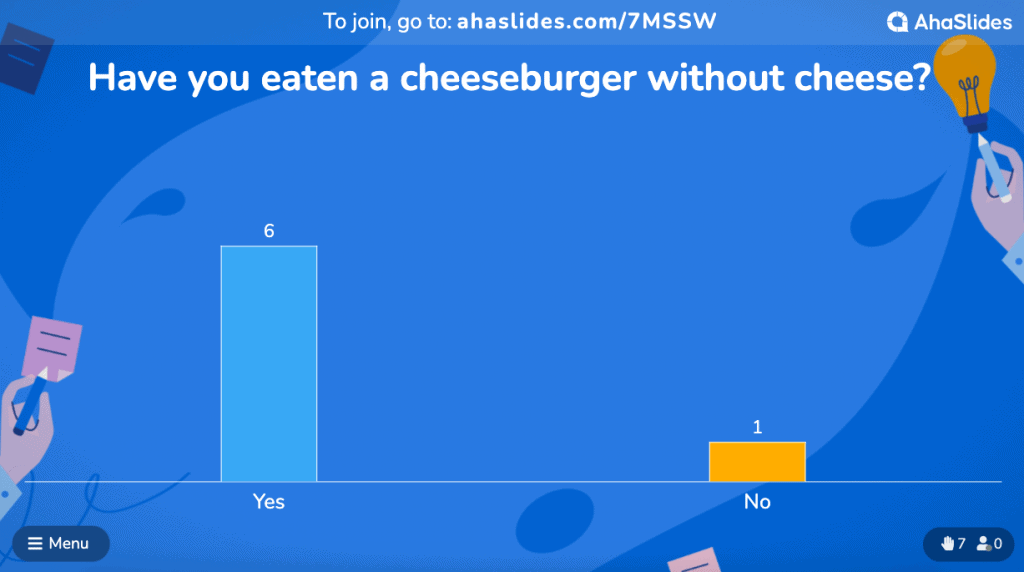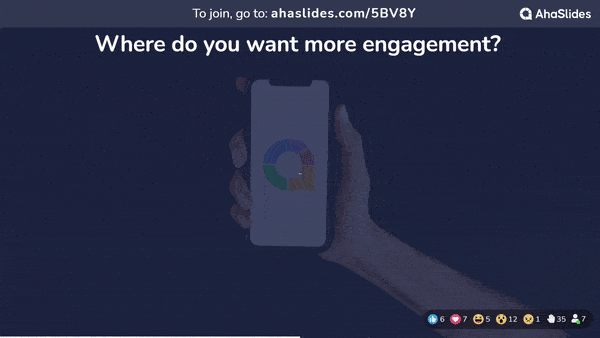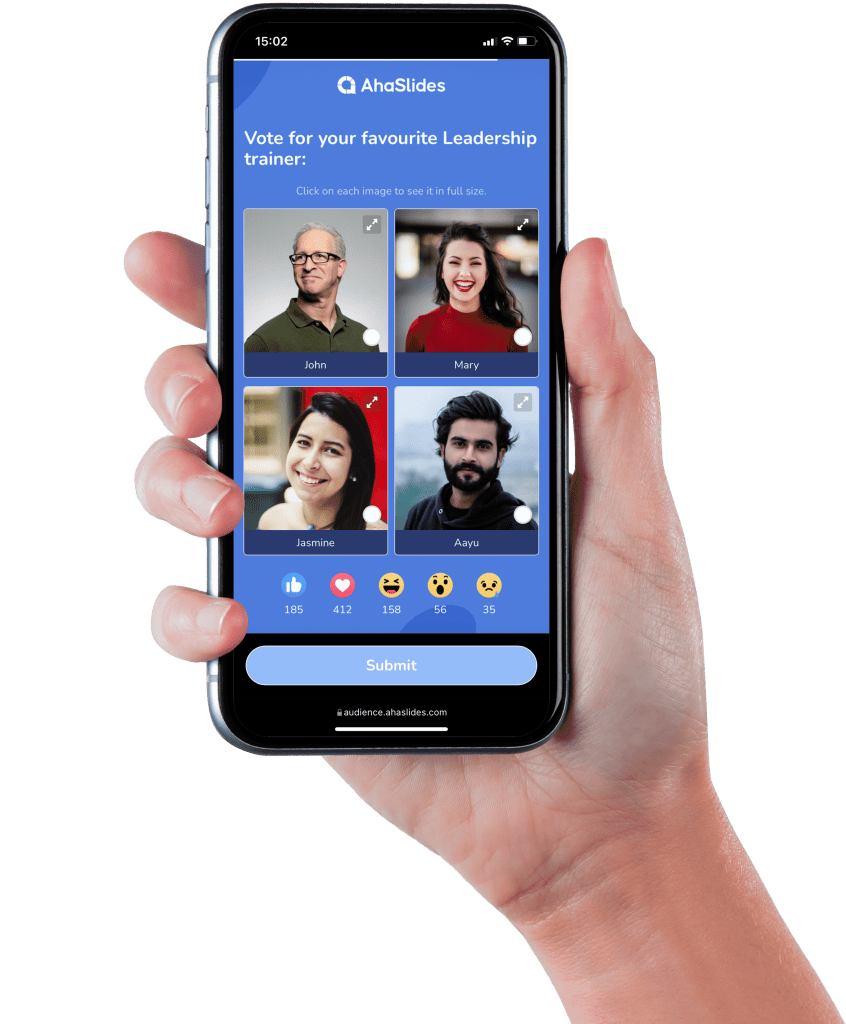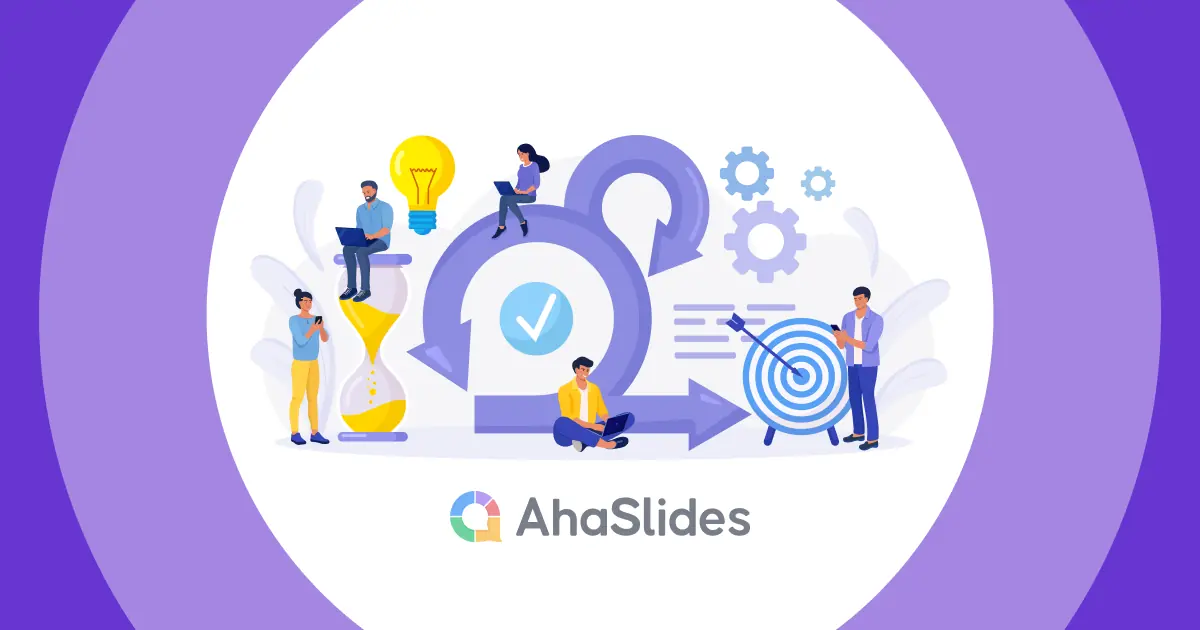When seeking to gain valuable insights from others, the questionnaire is a powerful research tool.
But with great power comes great responsibility - as you embark on your quest for understanding, consider not just the predefined boxes but different types of questionnaires that make a big difference for people filling them out.
Let's see what they are and how you can use them in your surveys effectively👇
Table of Content
More Tips with AhaSlides

Looking for More Fun During Gatherings?
Gather your team members by a fun quiz on AhaSlides. Sign up to take free quiz from AhaSlides template library!
🚀 Grab Free Quiz☁️
Types of Questionnaires
From structured to unstructured, let's explore the 10 types of questionnaires for your survey needs:
#1. Structured questionnaire

The unstructured questionnaire uses closed-ended questions with predefined answer options like multiple choice, yes/no, tick boxes, drop downs, and such.
Questions are standardised with fixed responses for all respondents, and they are the easiest to analyse in large-scale surveys since responses can be directly coded numerically.
They are best suited for descriptive studies on attributes, behaviours, and attitudes that can be predefined.
Examples of questions include choosing a favourite from a list, rating on a scale, or selecting timeframes.
Be aware that it limits the possibility of unexpected answers outside the provided options and the ability to explore qualitative nuances beyond the options given.
💡 Which questionnaire should you use in research? Explore the best list here.
#2. Unstructured questionnaire
The unstructured questionnaire consists entirely of open-ended questions with no predetermined answers. It allows for flexible, detailed responses in respondents' own words.
Respondents can answer openly without limiting themselves to fixed options.
It's helpful early on to identify themes/categories for structured questioning later and with small samples for depth over breadth of insights.
Examples include writing responses for "why" and "how" type questions.
Thus, they are harder to analyse as responses are unstructured text rather than numeric codes. They generate a large volume of text data that requires more time to analyse thoroughly.
#3. Semi-structured questionnaire

The semi-structured questionnaire combines closed and open-ended question formats within one questionnaire.
Open questions allow for personalised responses while closed ones enable statistical analysis.
Examples may include multiple-choice questions with an option for "other" with a comment box, ranking/rating scale questions which can be followed by an open "please explain" question, or demographic questions at the start can be closed like age/gender while occupation is open.
It's the most widely used type that balances structure with insights while maintaining some standardisation and flexibility for comparative analysis.
Still, it's important to pilot test question prompts, response scales, and open parts to prevent any lack of context or misinterpretation of questions.
#4. Hybrid questionnaire

The hybrid questionnaire Incorporates a variety of question formats beyond just closed and open-ended.
It may include rating scales, rankings, semantic differentials, and demographic questions. This adds diversity to keep respondents engaged and provides different insights.
For example, asking respondents to rank options followed by an open question or using rating scales for attributes and open comment boxes for elaboration.
Feedback can be numeric as well as descriptive based on the question types used.
It tends to skew more towards flexibility than structured surveys due to a mix of formats.
Using this type of questionnaire enhances richness but also adds more complexity in navigating different analysis approaches, so it's important to consider how you order and group different question types for a coherent result.
#5. Diagnostic questionnaire

Diagnostic questionnaires are designed specifically to assess or diagnose certain conditions, traits or characteristics.
They aim to evaluate specific symptoms, behaviours or traits related to a particular area of interest like mental health disorders, learning styles, and consumer preferences.
The questions are carefully crafted based on established diagnostic criteria/guidelines for the topic being examined.
In psychology, they aid in diagnosis, treatment planning and monitoring the progress of disorders.
In education, they provide insights into students' learning needs to tailor teaching methods.
In market research, they give feedback on products, branding and customer satisfaction.
It requires training and certification to properly administer, interpret and take action on results.
#6. Demographic questionnaire

A demographic questionnaire collects basic background information about respondents such as age, gender, location, education level, occupation, and such.
It gathers statistical data on the characteristics of survey participants or a population. Common demographic variables include things like marital status, income range, ethnicity, and language spoken.
Information is used to analyse results by subgroups and understand any relationships.
The questions are placed at the beginning to quickly gather these facts before the main content questions.
It helps ensure representative sampling of relevant subgroups for targeted populations and acts as a starting point for customised programs, outreach or follow-up initiatives.
#7. Pictorial questionnaire

The pictorial questionnaire uses images/pictures along with words to convey questions/responses.
This may involve matching pictures to responses, arranging pictures in a logical order, and pointing to selected images.It's appropriate for participants who have low literacy skills or limited language proficiency, children, or individuals with cognitive impairments.
It provides an engaging, less intimidating format for participants with certain limitations.
Pilot testing is important to ensure all ages/cultures understand the visuals correctly.
#8. Online questionnaire

Online questionnaires are distributed via web links for easy completion on computers/mobile devices. They offer the convenience of 24/7 access from any location for respondents.
There are apps available to build and spread the surveys easily, such as Google Forms, AhaSlides, SurveyMonkey, or Qualtrics. The data then are collected instantly into digital files for efficient analysis.
Though they provide quick results in real-time, they lack the non-verbal social context unlike in-person and have a greater chance of incomplete submissions since respondents can exit anytime.
#9. Face-to-face questionnaire

Face-to-face questionnaires are done in a live, in-person interview format between the respondent and the researcher.
They allow the interviewer to probe for more details or clarification with follow-up questions, and present additional explanations to any unclear questions.
Non-verbal communication and reactions can also be observed to gain further context.
They are suitable for complex, multi-part questions read aloud along with response options, but they need interviewers who are trained to ask questions consistently and objectively.
#10. Telephone questionnaire

They can be more convenient than a face-to-face interview by eliminating travel time and costs, and allow researchers to reach broader geographic populations.
Questions can be read out to those unable to read or write.
There's no visual cue, so questions need to be very clear and simply worded. It's also harder to retain respondents' attention fully compared to in-person settings.
With video call apps like Zoom or Google Meets, this setback can be minimalised, but scheduling calls can be challenging due to availability, and time-zone differences.
Key Takeaways
And there you have it - a high-level overview of the main types of questionnaires!
Whether structured or free-flowing, blending both or more, the format is just a starting point. True insight comes down to thoughtful questions, respectful rapport, and a curious mind to delve into each finding.
Explore AhaSlides' Free Survey Templates
Frequently Asked Questions
What are the two main types of questionnaires?
The two main types of questionnaires are structured questionnaires and unstructured questionnaires.
What are the 7 types of surveys?
The main 7 types of surveys are Satisfaction surveys, marketing research surveys, needs assessment surveys, opinion surveys, exit surveys, employee surveys and diagnostic surveys.
What are the different types of questionnaire questions?
Some common types of questions used in questionnaires could be multiple choice, check boxes, rating scales, ranking, open-ended, close-ended, matrix, and many more.











